Explore the Scorpion and the Camp & Trail by Pathfinder Knife Shop
Dave Canterbury and crew have been hard at it over the years, training students, designing gear for adventurers and creating knives that will most likely be heirlooms.
The Self Reliance Outfitters website has a list of five essential features that should be found in a survival knife: a full tang, a blade at least 5 inches long, be made of carbon steel with a 90-degree spine, and razor sharp.
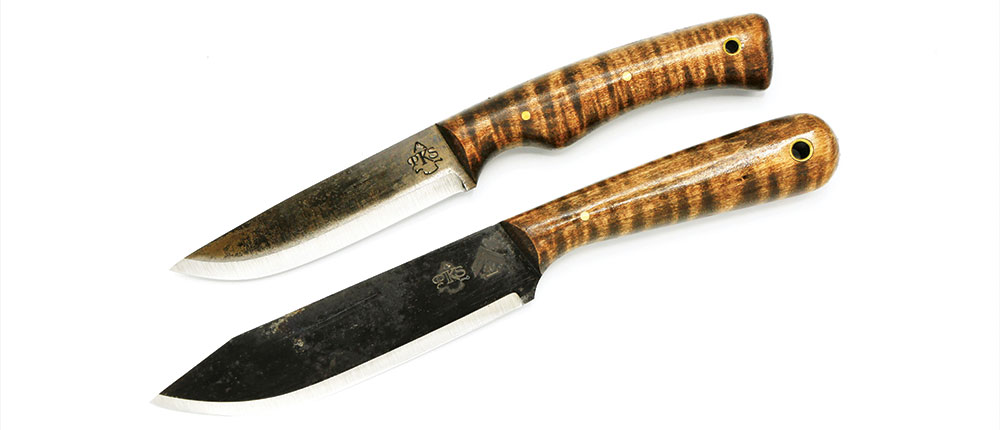
PATHFINDER KNIFE SHOP
Knives from the Pathfinder Knife Shop are made in Indianapolis, Indiana. The company provides a lifetime warranty on the blade. Two of its stellar, fixed-blade knives—the Scorpion and the Camp & Trail—were sent to me for review.
Both knives came wrapped in plastic to keep the oil on the blades. The sheath was separate in order to avoid getting gunky. Both feature curly maple handle scales, handsomely rugged, brown leather sheaths and legendary, 1095 high-carbon steel; and both have a rustic, forged finish that isn’t a coating.
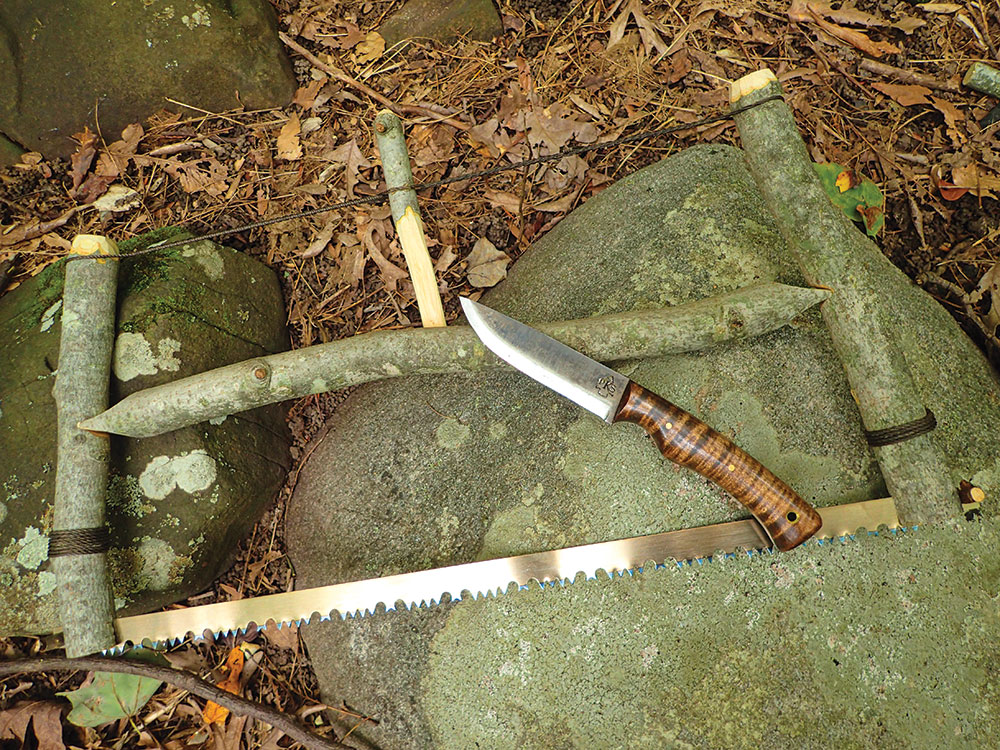
The Camp & Trail knife is a favorite of the Pathfinder School’s lead instructor, Corporal Shawn Kelly, who also hosts the “Corporals Corner” YouTube channel. This old-timey-looking knife comes in at a hair more than 10 inches long overall and sports a 5½-inch blade that’s 3/32 inch thick (which happens to be my favorite for fixed-blade knives).
The Scorpion has the essence of a Scandinavian puukko knife—elegant and sleek. Its overall length is 9 inches, with a 4¼-inch blade. This one has a 1/8-inch-thick spine and a high Scandi grind.
These two rustic beauties were made for action, not talk, so off we went.
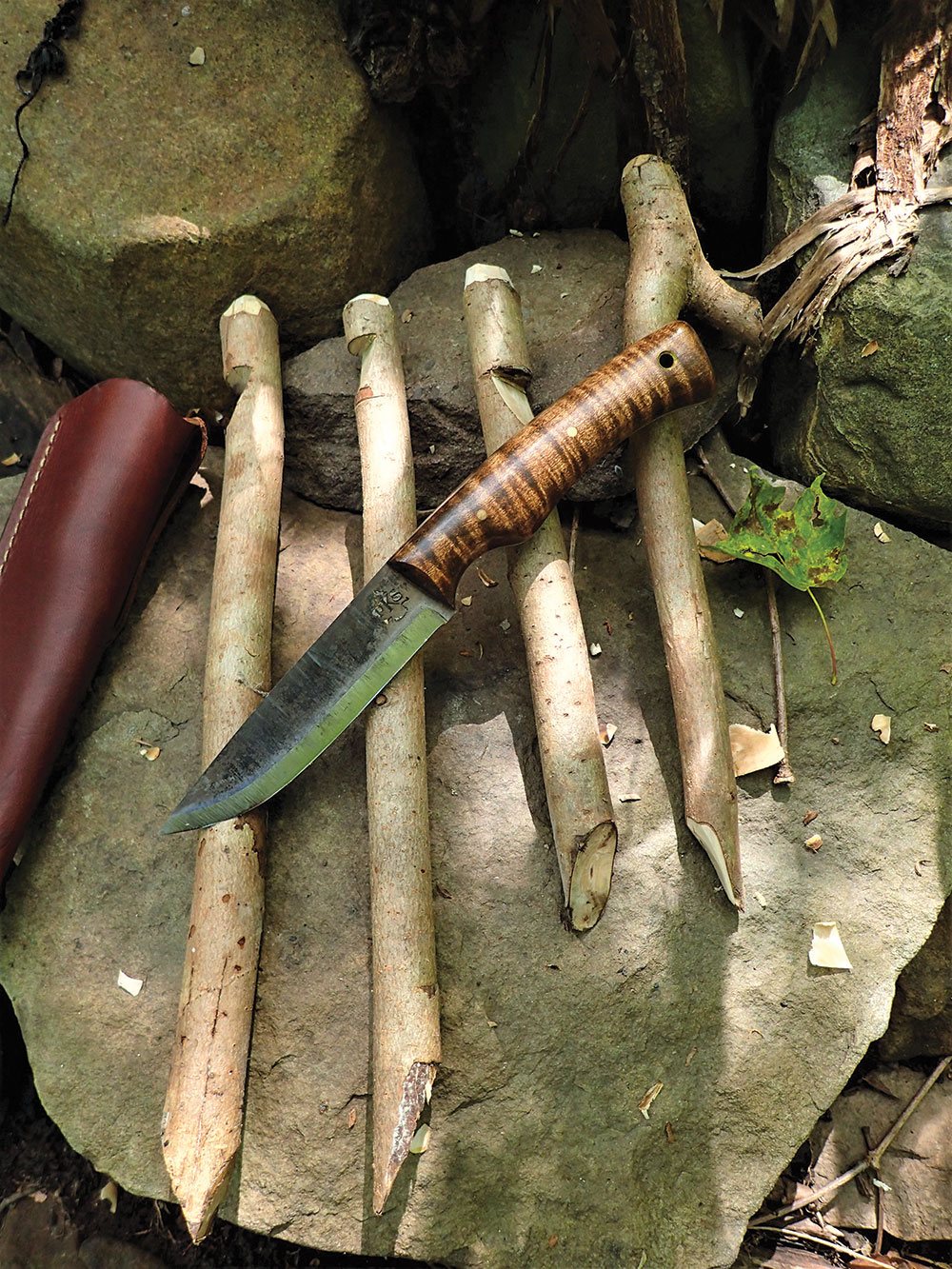
SCORPION
For me, the best way to get to know a tool or, for that matter, any piece of outdoor gear is to go out and use it as it was intended—in the woods. In fact, I was looking forward to using the Scorpion during various woods outings to craft implements for camp, including tools and fire.
In 2013, I saw a Dave Canterbury video showing a bucksaw he made with a saw blade, wood, cordage and key rings. This is the bucksaw style taught at the Pathfinder School, and I wanted to make this version with a Pathfinder knife. Enter the Scorpion (however, I had to enlist the help of another saw to get the main three pieces cut, which were stout).
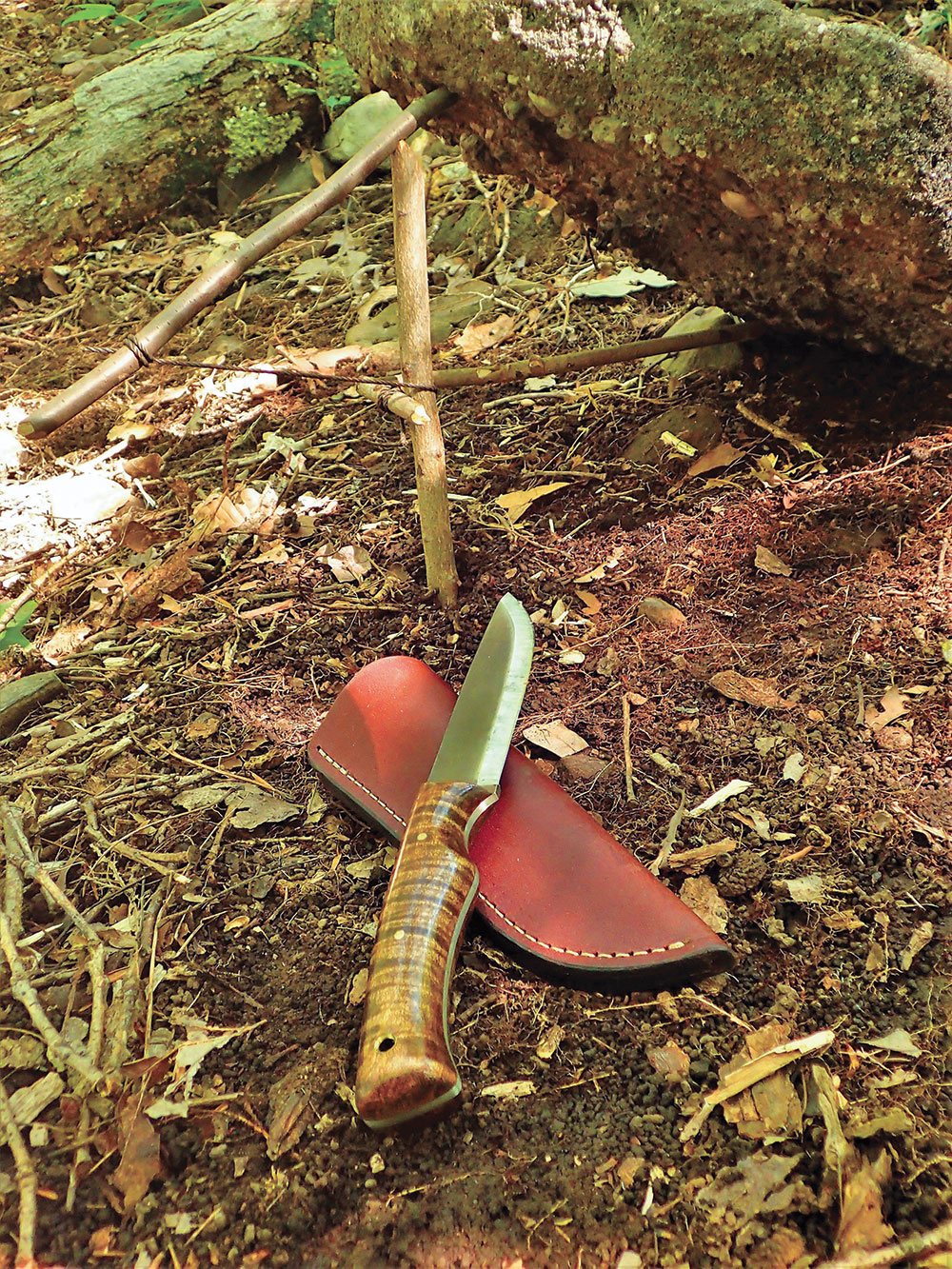
From there on, it was all Scorpion and a baton. I made the V-notches in the vertical pieces by batoning into the greenwood at a slight angle and cleaned the notches up with the front of the blade where it narrows. The 1/8-inch spine offers a solid energy transfer; and, because I only went about a third of the way into the wood, it wasn’t considered “abuse.”
Next, I used the Scorpion to carve the horizontal piece to fit into the V-notches. I used the knife in a chest-lever grip, utilizing power from my shoulders and back.
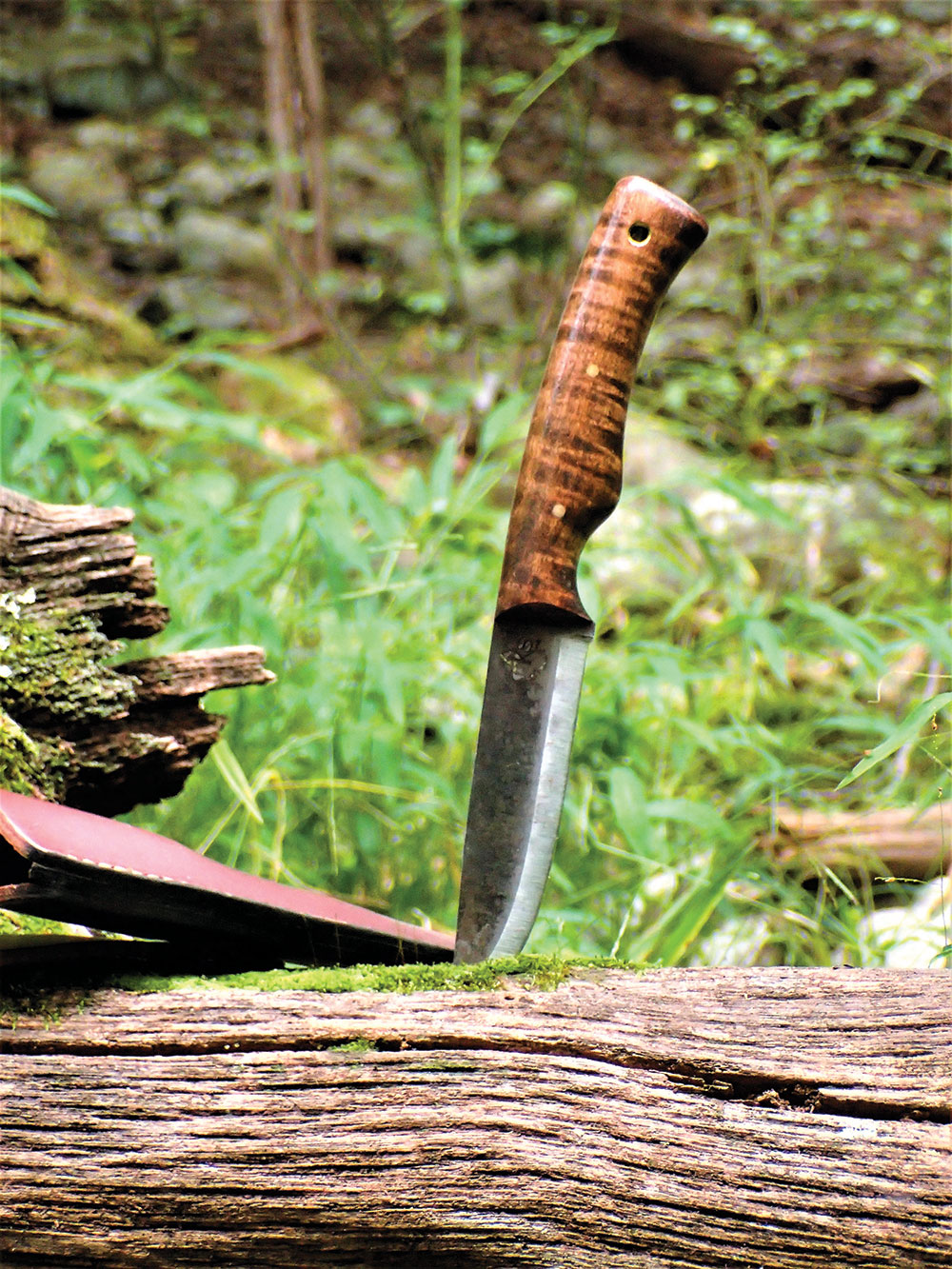
The Scandinavian grind excelled at this task, just like an actual puukko knife. I carved two wedges, giving extra attention to keeping them on the same in-line plane to match up. I placed the horizontal into the V-notches and did a mock setup to get the layout and mark where I needed to baton my splits.
A tip I got from watching Shawn Kelly’s video about the bucksaw was to use a pencil to mark where the blade would go (I used a Space Pen I had handy). I made the necessary splits with a baton, fitted the saw blade with wooden pegs I carved with the knife and set it inside. I added some whipping with #36 bank line where the splits stopped.
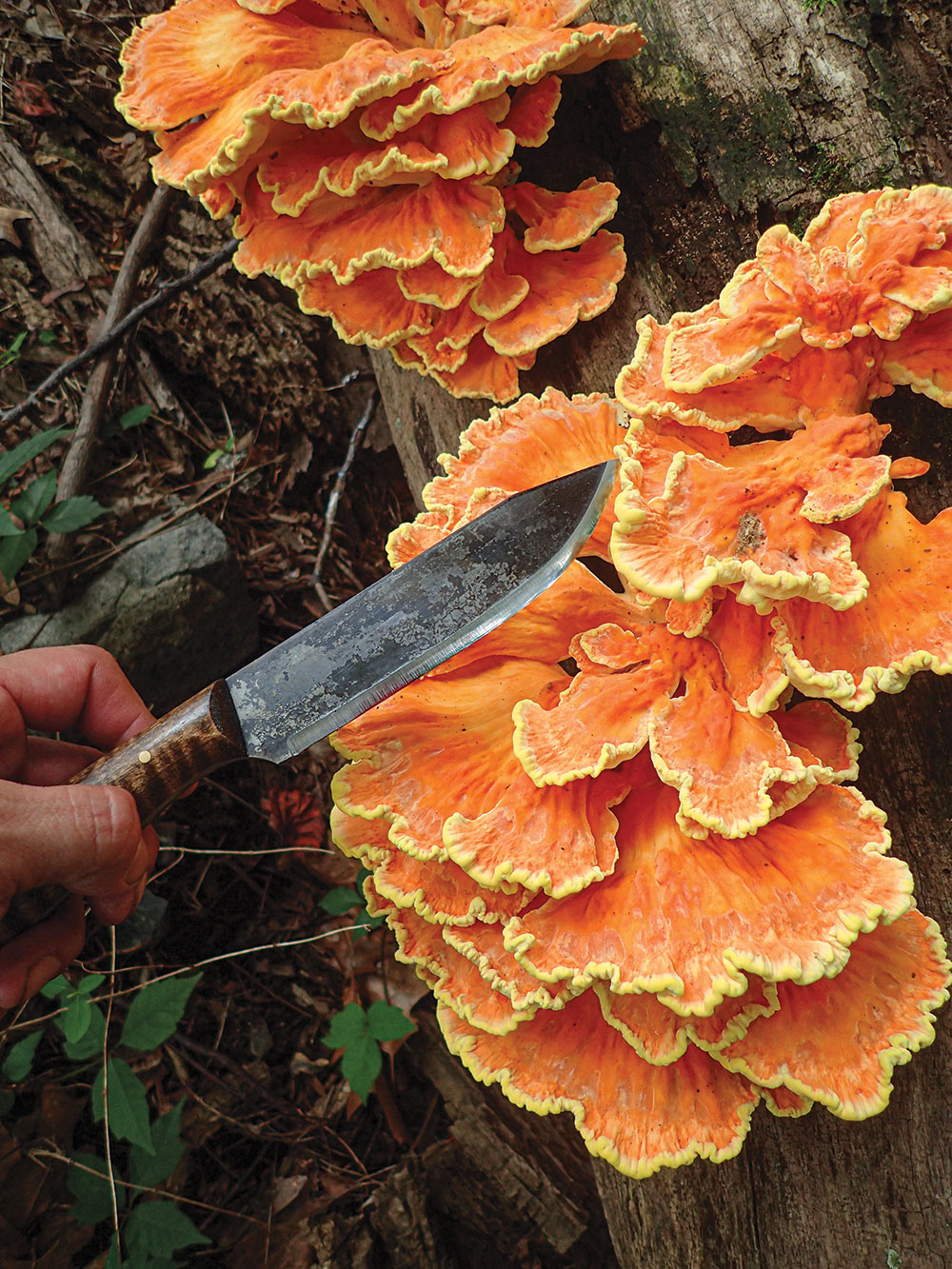
The chest-lever grip isn’t only used for power cuts; I find it excellent for detailed finesse work as well. So, using this grip, I chamfered the tops of the vertical pieces for aesthetics. They serve no real purpose here, but that’s what all the “cool bushcrafter kids” do. I also carved small notches on the tops for the cord to catch when using the windlass. I carved a small, finger-thick stick—used as my tensioning piece for the windlass—once again using the Scorpion and the chest-lever grip. I cut a length of bank line, tied a reef knot (square knot), inserted the tensioning stick, wound it up and called it “good.”
I called upon the Scorpion for trap-making. I cranked out a figure-four trap and a Paiute deadfall—simple in essence, and making these provides excellent indicators of how comfortable the knife handle is. The 4¼-inch blade gave enough control for light notching that’s needed for making the Paiute deadfall. A 45-degree cut to the vertical piece, a small V-notch on the diagonal (load-bearing) stick and some scoring for the cord attachment comprised all the carving needed for this trap.
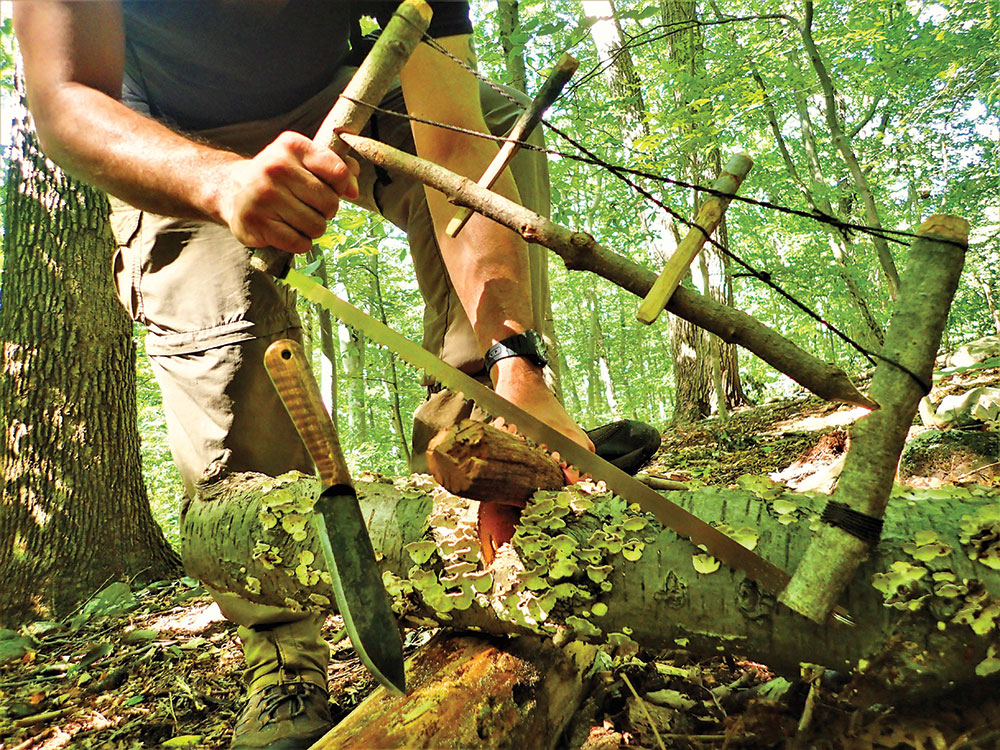
One of my favorite tasks involves firecraft. This is best accomplished with a saw, a splitting tool and a knife. Using the Pathfinder-style bucksaw allowed me to get decent-sized rounds that I split into manageable pieces that were easier to further split with the Scorpion. When I got a good amount of finger-to-broomstick-wide pieces, I set some aside for making guaranteed tinder.
Making feather sticks from wood during wet seasons is an excellent way to get guaranteed dry natural tinder. This method is especially true when there’s no fatwood or birch bark, because “Old Man’s Beard” (lichen), grasses and poplar bark can be rendered useless in the rain.
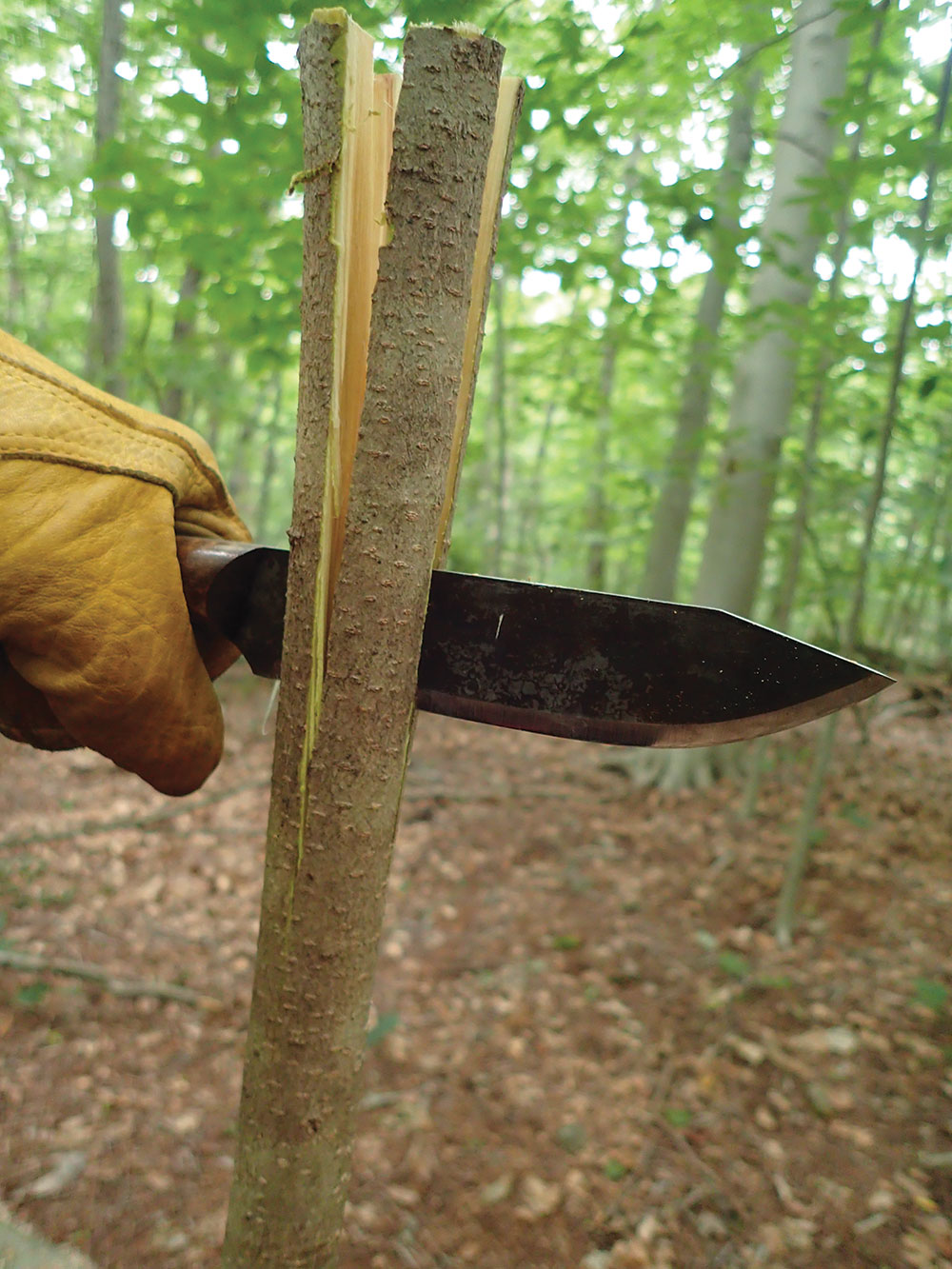
The Scorpion evens out the playing field. Of course, a little technique and skill are needed. Its super-sharp zero grind allows for very thin, curly feathers on dead poplar, witch hazel and maple. The belly of the Scorpion made the best curls. However, the belly is about 4 inches from the optimum control area near the handle … but control is the key.
The Scorpion’s 90-degree spine was the star of the firecraft tasks. Aggressively sharp, it threw sparks like a flamethrower and quickly ignited all the feather sticks I’d made with the Scorpion.
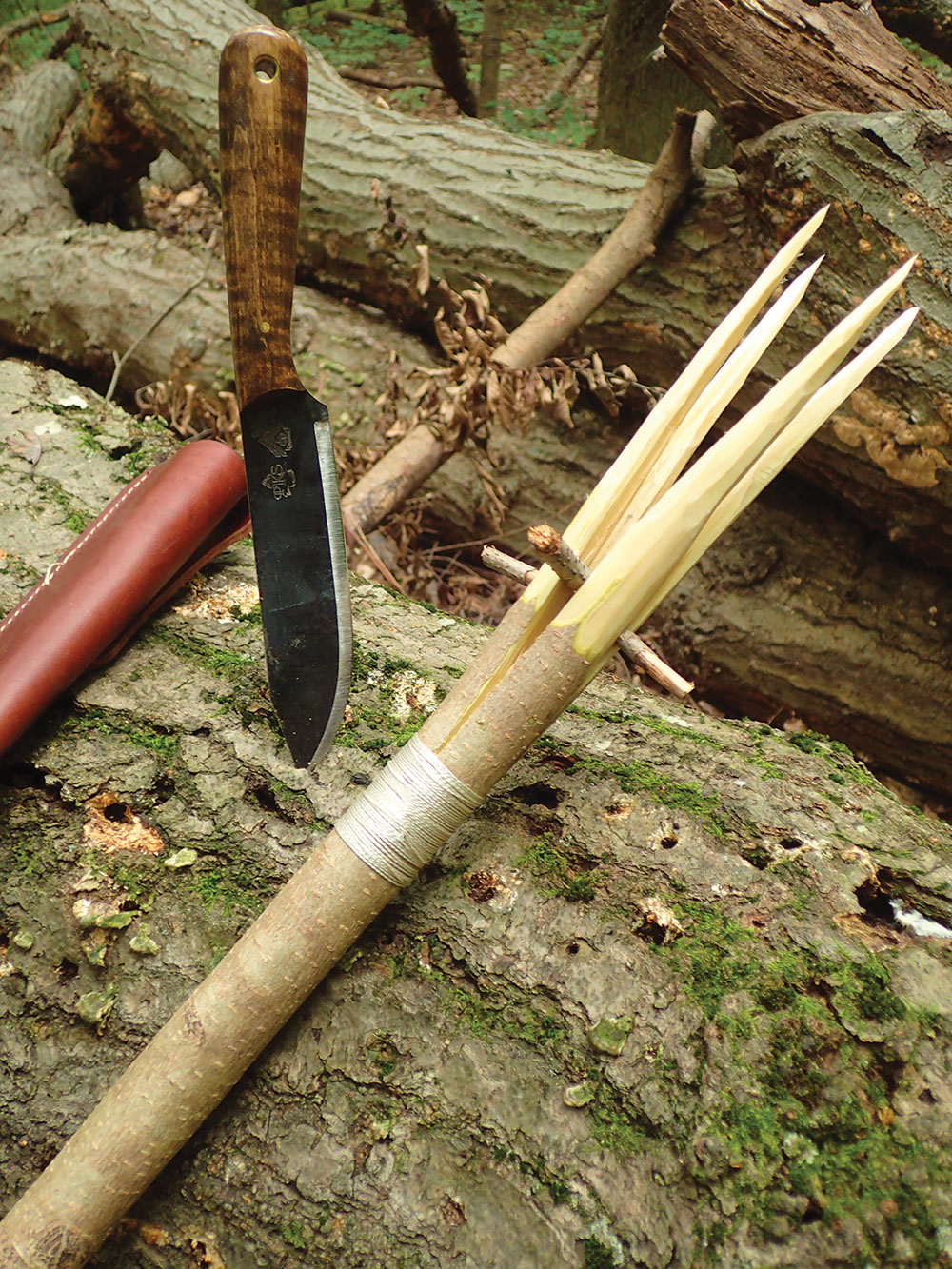
CAMP & TRAIL
Years ago, I watched videos of Dave Canterbury making wooden tools. He also elaborated on these tools in his bushcrafting book. I used the Camp & Trail knife to reproduce these tools in my camp.
Wooden tools can also be weapons or hunting devices. Two that come to mind have been around since cave dwellers were tossing them at their prey. Spears were made from wood by almost all indigenous cultures around the world. They serve many different purposes in a camp. A spear is an extension of your arm, allowing a much higher reach into trees for bird nests (for tinder) or fruit.
For frogging and primitive fishing, a spear is the perfect wooden tool. It isn’t limited to water; small mammals are also targets.
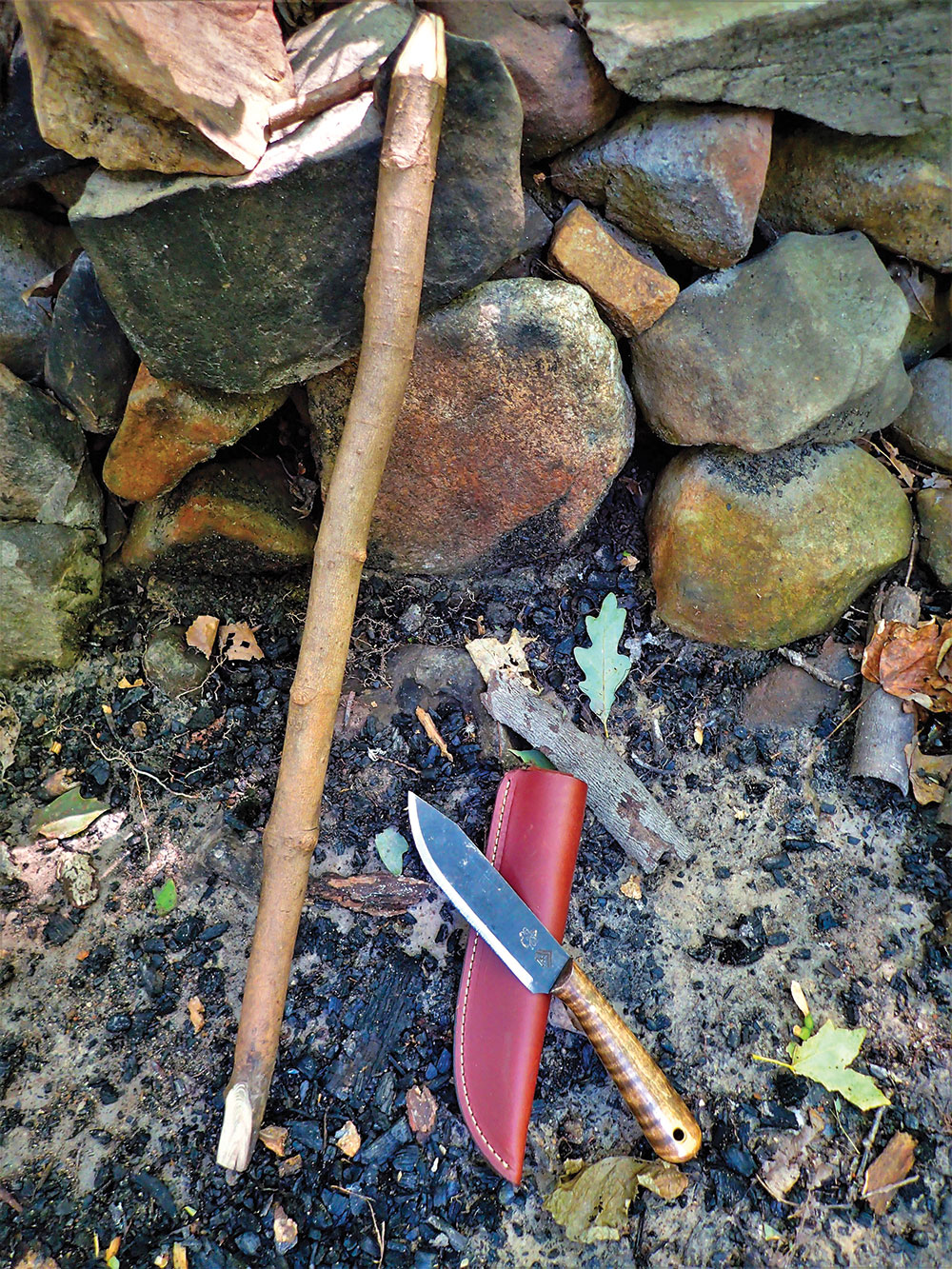
My most-used wooden tool is the mallet (maul). This tool can easily be made with a saw and a fixed-blade knife.
I selected a stout piece of wood that was about 3 to 5 inches thick and about fingertip-to-elbow length. At about fingertip-to-wrist length, I scored a mark with the knife and sawed around the wood about 1 inch.
I stood the wood up so that the sawed section was on the bottom. Using the Camp & Trail knife, I started to baton the wood toward the saw cut. This started to take shape as the handle but needed carving until it was comfortable. The Camp & Trail’s long blade made this more efficiently than a small blade.
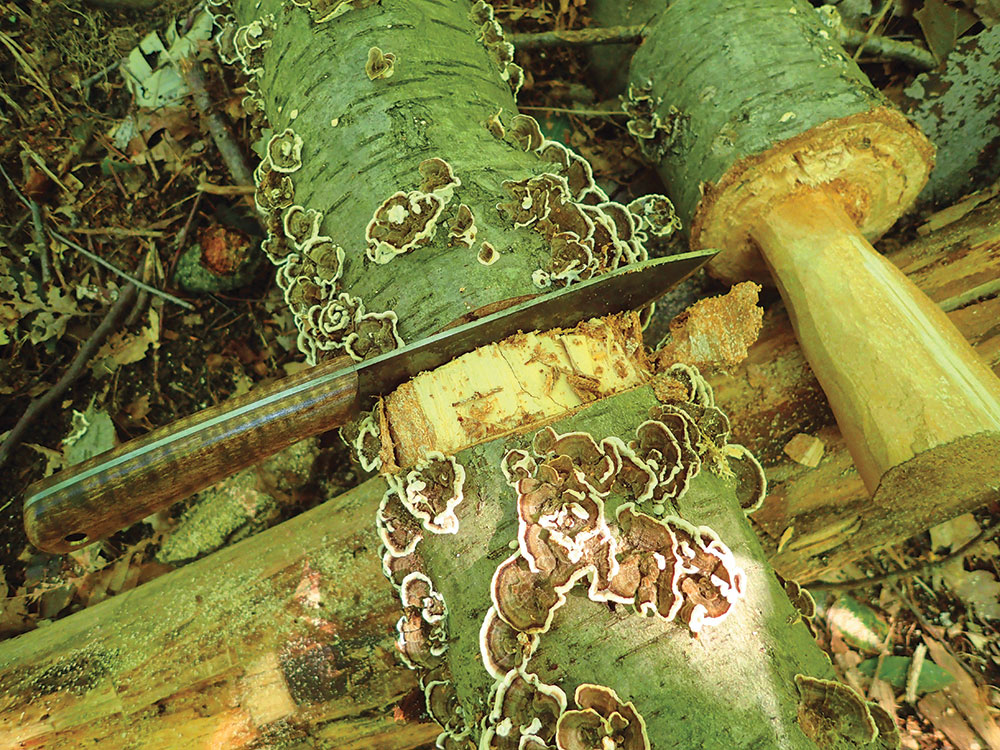
In the backyard or camp, there’s no denying how vital a wooden stump can be; there’s something to be said about having a reliable flat surface. In addition, after a day of outdoor activities, a flat place to sit down in camp is comforting, and it also makes a good table or nightstand.
“The Scorpion and Camp & Trail knives both excelled at their required tasks and will remain in my arsenal of cutting tools.”
When it comes to building a fire or other “camp crafts,” a stump is the perfect workbench for splitting or carving wood on top of it. If it’s placed on its side, it makes a decent surface to saw on, especially if it has a V-notch, which makes it multifunctional.
I used the bucksaw made with the Scorpion knife to cut a section of freshly downed beech. From there, I used the Camp & Trail-fashioned maul to V-notch the stump by hammering on the knife’s spine. The blade is 3/32 inch thick—which didn’t bother me one bit—nor did it bother the knife. This modification made a better sawing station.
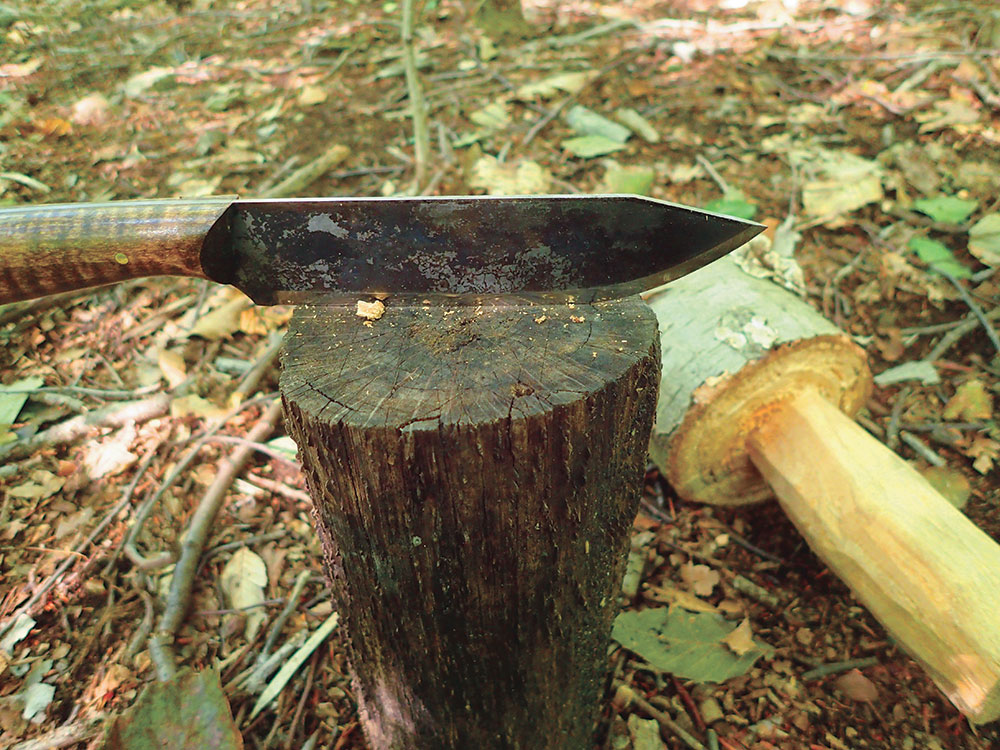
Wedges are essential wooden tools to have, especially if there’s no heavy splitting tool available. If only a fixed blade is available, wooden wedges are great for splitting logs.
I started with stout, hardwood pieces about the length of my forearm and about 3 inches thick. The top portion was beveled with the Camp & Trail to reduce splitting when pounded by a mallet. I carved aggressively to make wedge shapes on each side of the wood. This project is much easier using a chopping tool to rough out the wedge, but the Camp & Trail had a comfortable handle and a thin, sharp blade—a winning combination when carving hardwood. The Camp & Trail smashed this task.
For safety reasons, I made a gigging spear by selecting a long pole that extends higher than my eyes. I picked an end with the least knots. Using the Camp & Trail, I split the pole twice in the shape of a “+” about 6 to 8 inches down.
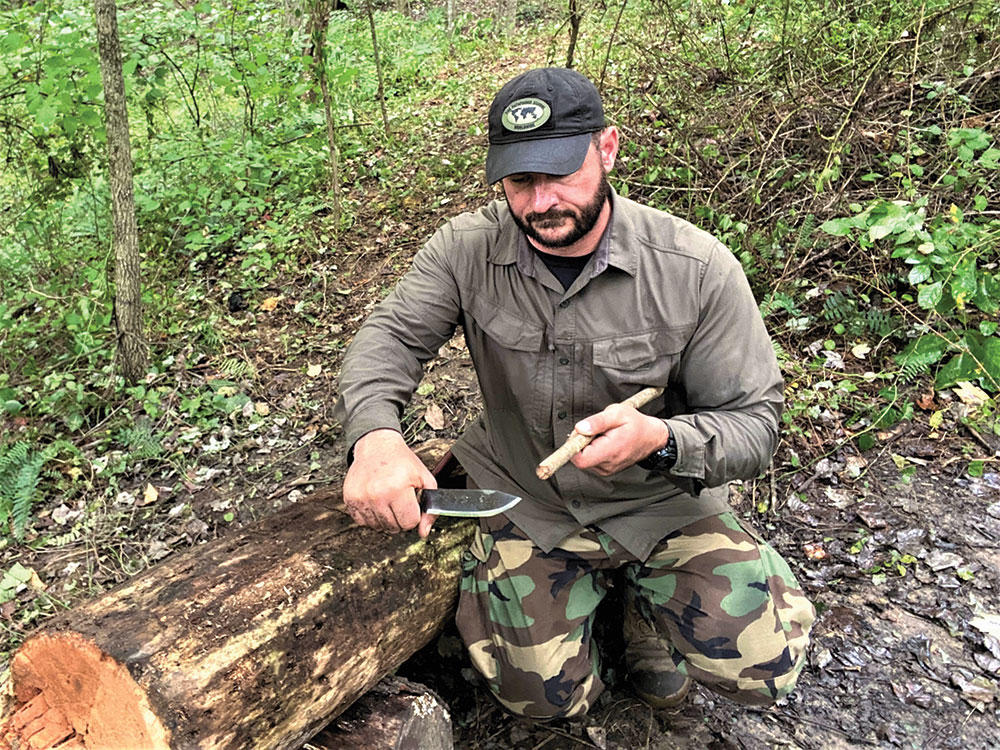
Then, I firmly held the pieces together as if they were still intact and sharpened them. I wedged sticks into the slits to splay them open. From that point, it was a matter of fine-tuning the spear to optimum sharpness. I used cordage to bind just below the splits to prevent further splitting and then used the Camp & Trail in various grips to get in between the prongs to thin and shape them. The knife remained sharp and comfortable … as expected.
A throwing stick is almost as simple and primitive as throwing a rock at something. For making the most out of a throwing stick, it can be modified to be a helpful camp tool.
I selected a piece of maple about fingertip-to-armpit length and about wrist thickness. I like to choose wood with a slight curve (but not as dramatic a curve as for fashioning a boomerang).
“The Camp & Trail knife is a favorite of the Pathfinder School’s lead instructor, Corporal Shawn Kelly, who also hosts the ‘Corporals Corner’ YouTube channel.”
Using a chest-lever grip with the Camp & Trail, I carved one end into the shape of a flathead screwdriver for hard digging into the ground. The other end was rounded for bearing down hard with a hand when digging. A throwing stick serves as a throwing weapon for small game and can also be used as a baton or a wedge in camp. It’s a proper, multifunctional wooden tool.
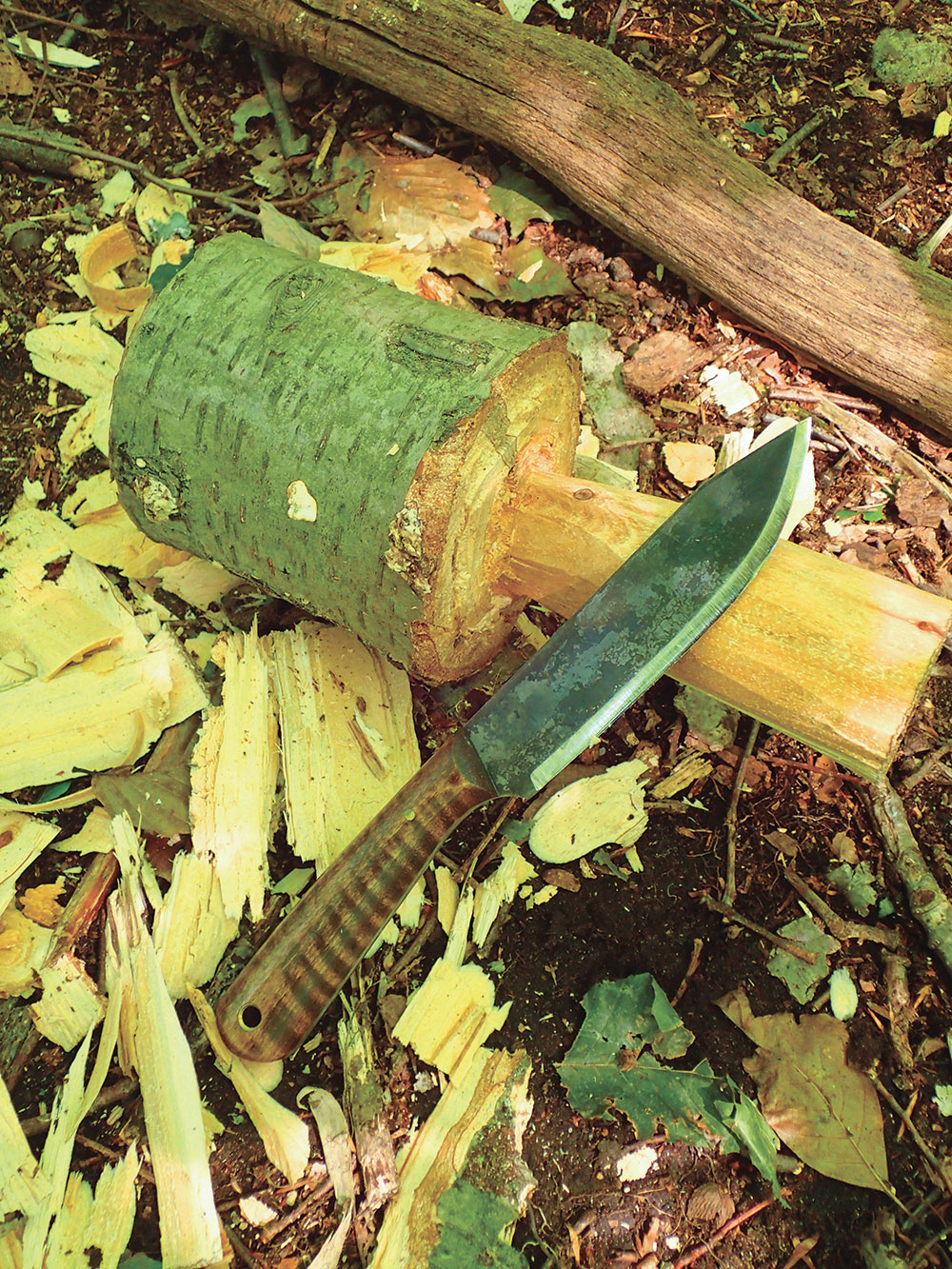
GOOD TRAINING, GOOD GEAR
In addition to stellar survival/wilderness living skills classes and top-quality adventure gear, the folks at Self Reliance Outfitters have given us knives from the Pathfinder Knife Shop.
The Scorpion and Camp & Trail knives both excelled at their required tasks and will remain in my arsenal of cutting tools. Mission accomplished.
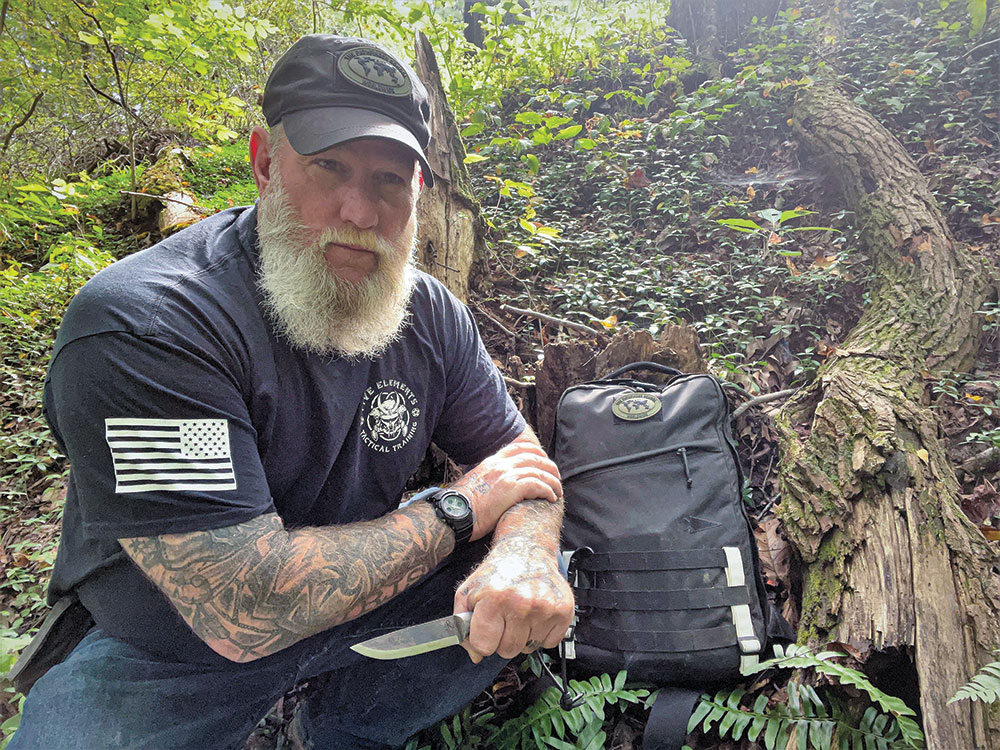
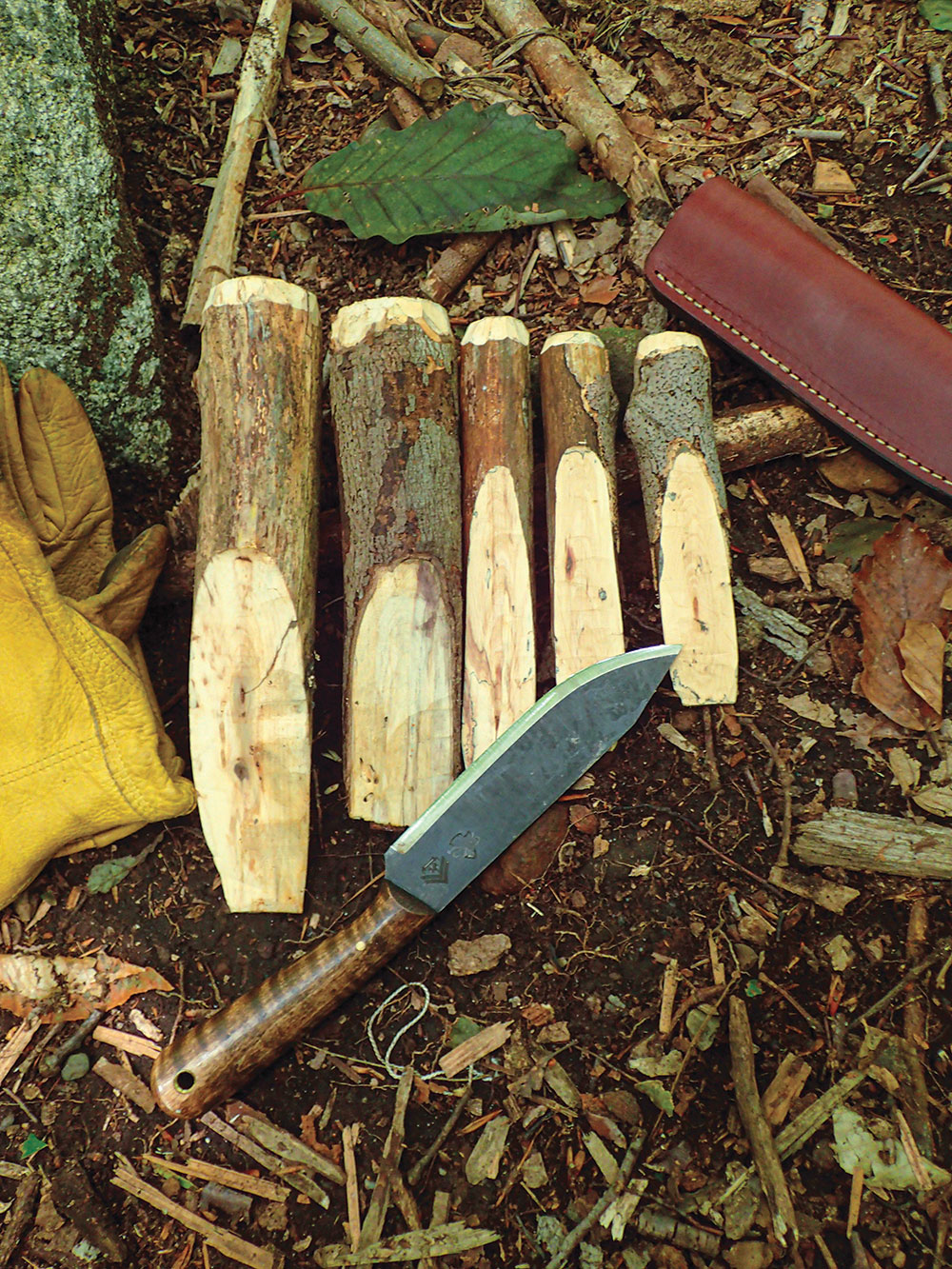
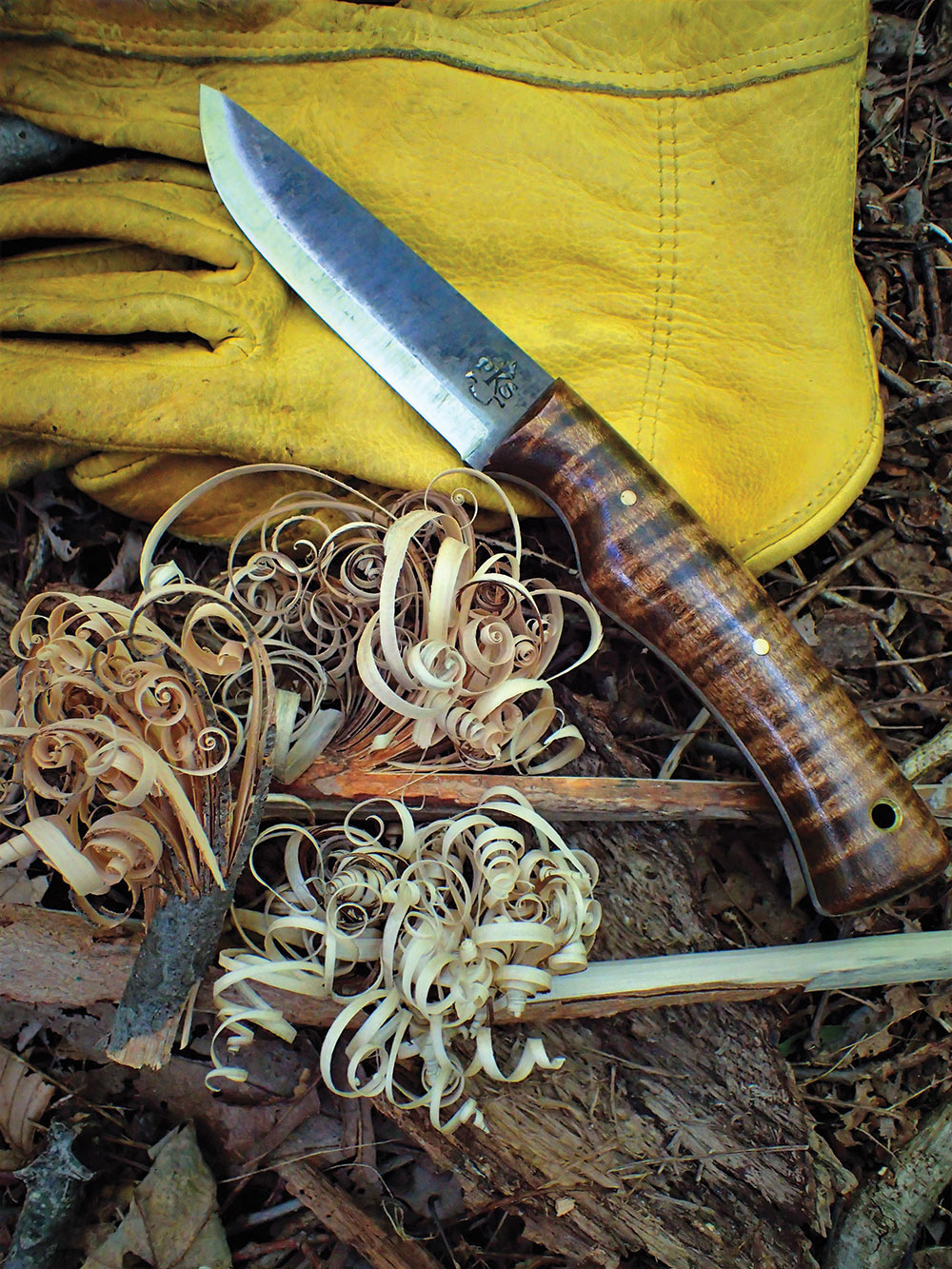
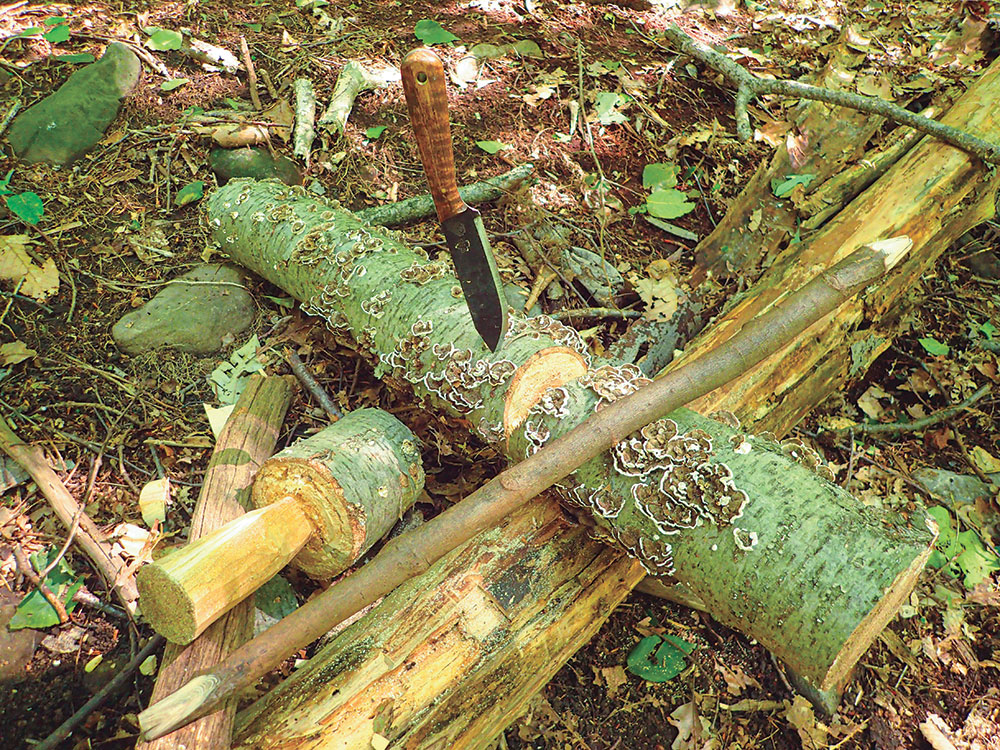
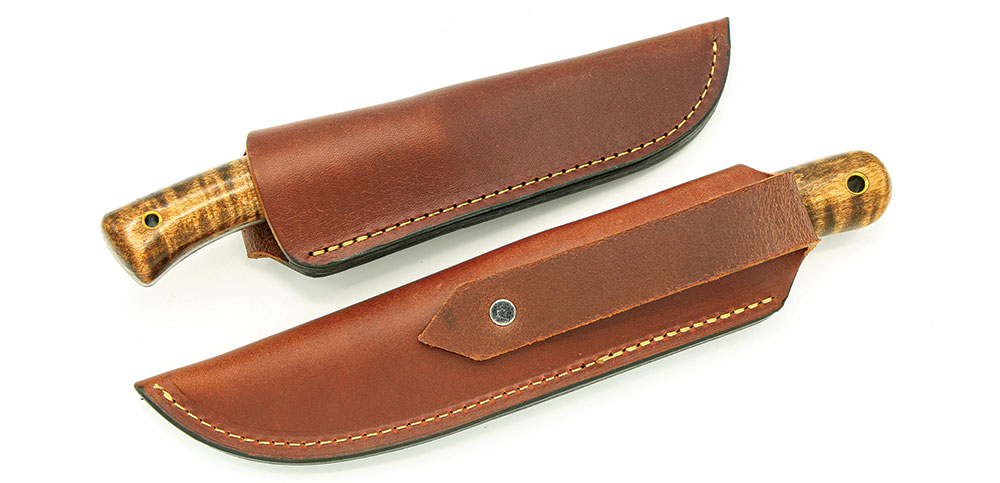
1095 HIGH-CARBON STEEL AT A GLANCE
1095 high-carbon steel that’s used for both the Scorpion and Camp & Trail knives has been around for quite a long time and was popular on old pocket and kitchen knives. Today, it’s more popular with bushcraft and survival knives due to its excellent toughness and easy sharpening. 1095 carbon steel is also popular with knife makers today because of its high machinability.
1095 performs in crucial areas such as edge retention, corrosion resistance, toughness, sharpen-ability and wear resistance. 1095 steel offers the following properties:
Hardness/Retention. This steel has a hardness in the 55–58 HRC range. This is a good hardness for carbon steel and is responsible for the steel’s excellent edge retention and wear resistance—thanks to the mix of carbon and manganese that’s used in the alloy.
Corrosion Resistance. It has insufficient corrosion resistance because there’s no chromium in the alloy. 1095 is corrosion-prone steel and could rust very quickly.
Sharpness. It’s reasonably easy to sharpen.
Machinability. With a rate of 45 percent, 1095 isn’t so great for machinability.
Toughness. 1095’s good toughness can decrease at the cost of hardness.
SHAWN KELLY PRESENTS “CORPORALS CORNER”
Shawn Kelly is the lead instructor for the Pathfinder School and is an avid user of the Pathfinder Knife Shop’s Camp & Trail knife.
He joined the Marine Corps in 1995. When he became affiliated with the Pathfinder School, he felt it had taken him 22 years to get back to a place at which he felt it wasn’t a “step down” from where he used to be—or should be.
After attending a few “fly-by-night” schools and being disappointed, Kelly found the Pathfinder School. He was a long-time fan of Dave Canterbury and the TV show, Dual Survival. He decided to take his chances at the school to see what the hype was all about. He spent the next 18 months training and completing all the courses that it had to offer at that time.
Kelly also operates a survival and bushcraft YouTube channel called “Corporals Corner.” His channel offers well-thought-out content regarding skills, tips, bush cooking and some very extravagant shelter builds that rival most “man caves” out there.
A version of this article first appeared in the February 2022 issue of American Outdoor Guide Boundless.

